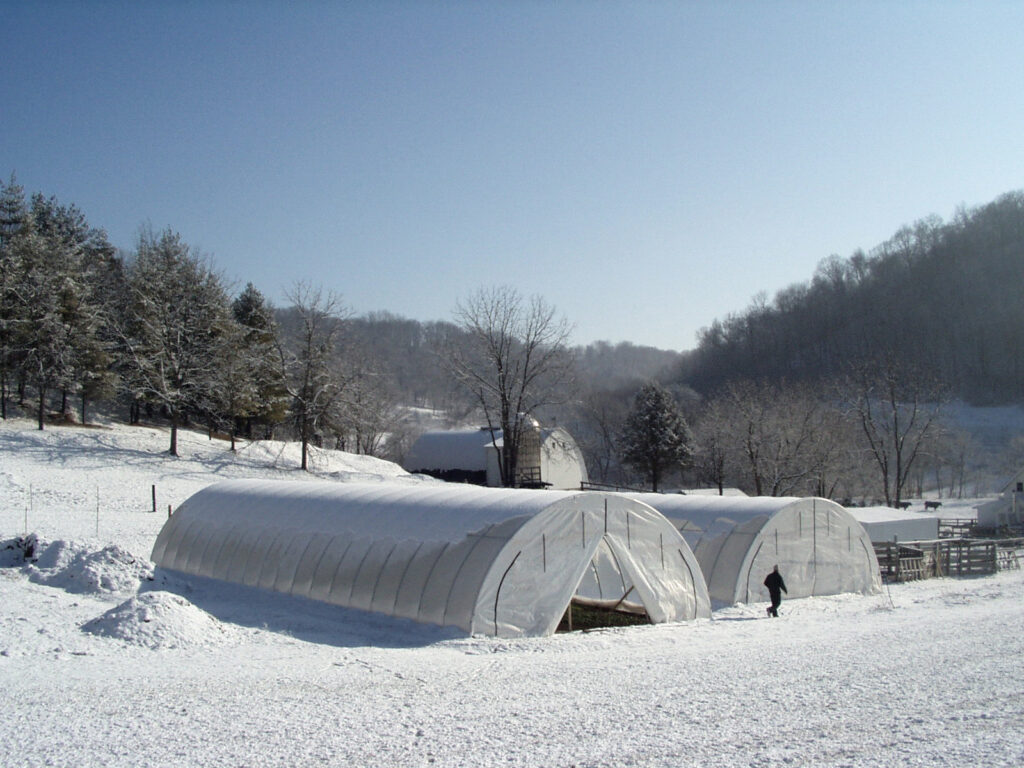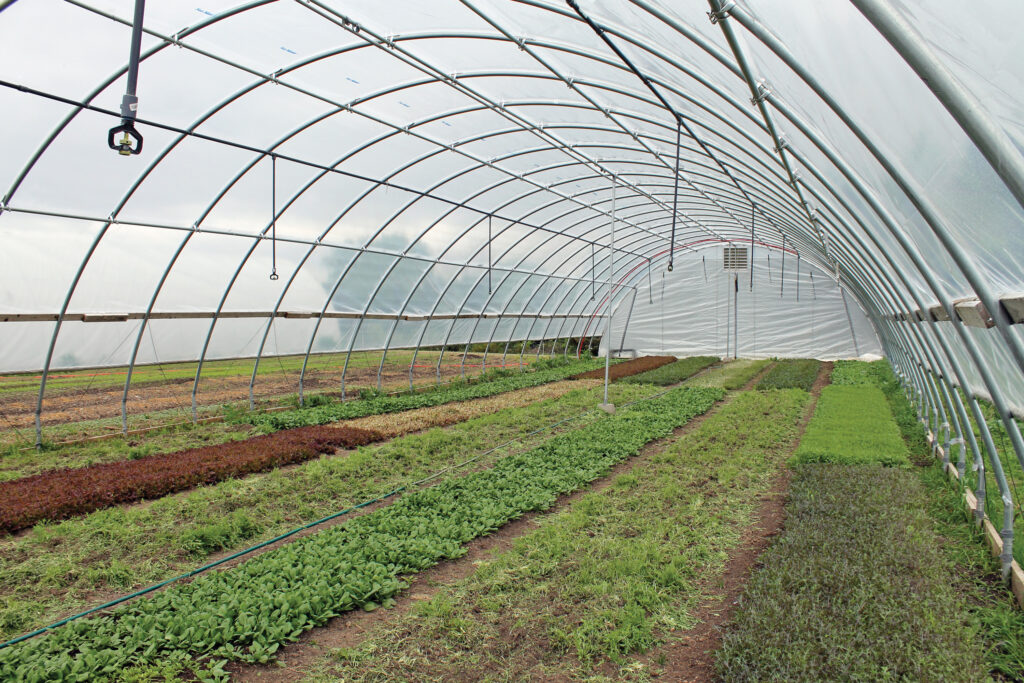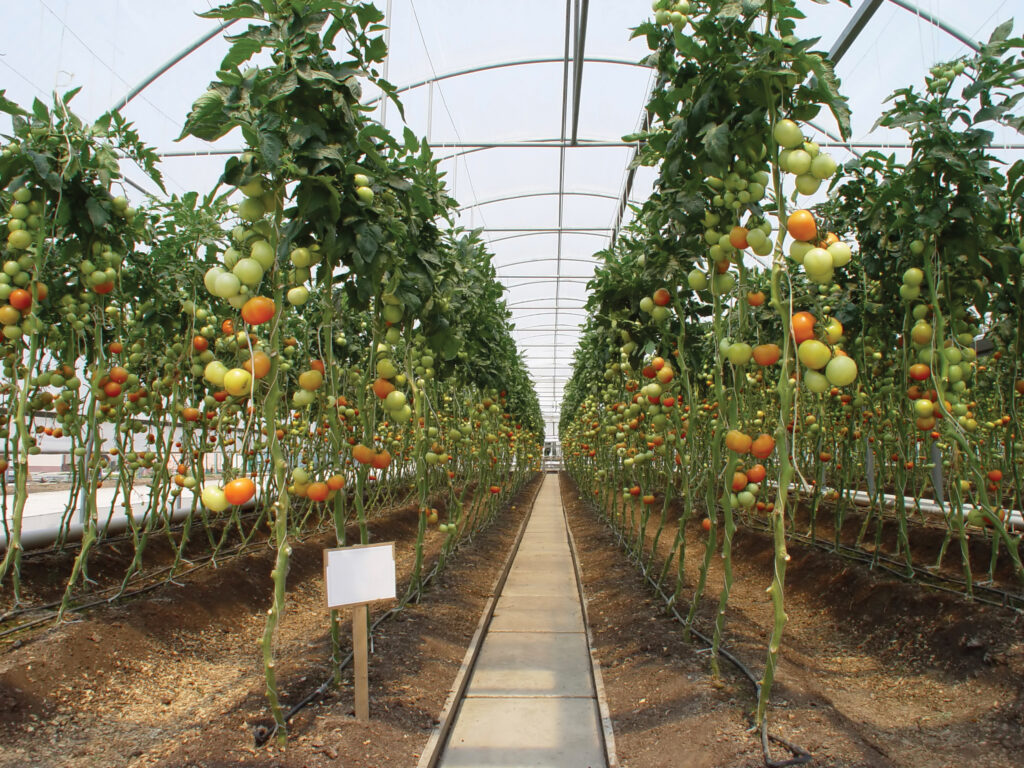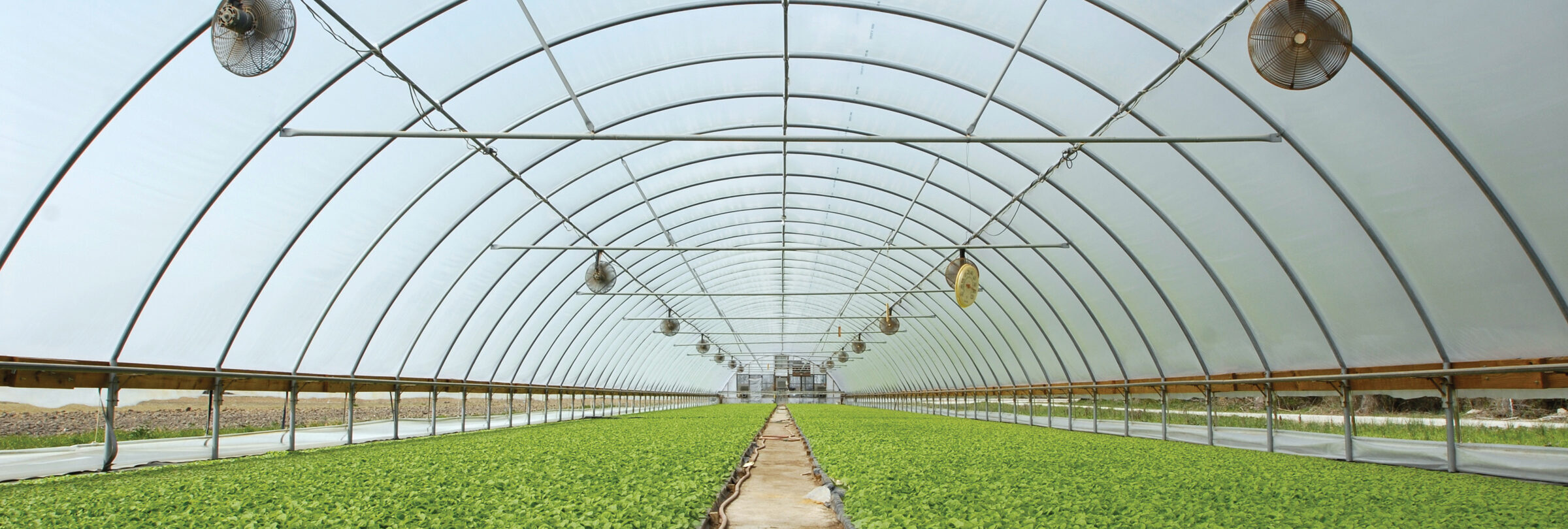The Guide To High Tunnel Production: Using A High Tunnel Hoop House And High Tunnel Grant To Improve Outdoor Cultivation
Outdoor cultivation has been the standard for agriculture since the beginning of time, and it certainly remains an effective method of crop production. Still, with each passing year, growing strategies improve and new technology allows growers to produce on scales that may have never been possible by simply growing in soil.
This doesn’t mean growers have to acquire a state-of-the-art greenhouse or grow room, though, as there are a number of ways to increase production in the outdoors. One way is to implement a high tunnel, which offers a convenient middle-ground between greenhouse and outdoor cultivation.
Growers obviously want to minimize their expenses, but at the same time want to maximize crop growth and boost their profitability. This can be a tough balance to achieve, as newer growing practices can often come with a hefty price tag.
However, with a high tunnel, growers can start to obtain some of the benefits of greenhouse growing, without having to make a large investment or overcomplicating their grow. This kind of structure offers a cost-effective solution that can significantly improve an operation’s efficiency, while providing a number of other benefits along the way.
A key advantage is the potential for a high tunnel grant, which is offered through the Environmental Quality Incentives Program (EQIP) by the Natural Resources Conservation Service (NRCS). This grant allows growers who qualify to obtain government funding that alleviates some of their production expenses. Outdoor cultivators who are trying to get ahead can not only improve the quality of their operation, but also potentially gain financial support to do so.
For growers who want to stick to soil, a high tunnel is the perfect way to enhance in-ground crop production, solve general outdoor issues and increase profits.
HIGH TUNNEL, HIGH PROFITABILITY
By optimizing crop growth and providing growers with the opportunity for grant support, a high tunnel can subsequently boost an operation’s value. The structure extends the growing season to allow for an earlier start and later finish, where growers can usually achieve an extra harvest.
Growers can use this opportunity to sell more crops in the spring and fall, some of which may fetch a better price premium because they are more difficult to find at certain times. This gives growers the potential for additional income, providing more stability than an operation that is inhibited by the weather during colder parts of the year.
Crops grown inside a high tunnel hoop house also tend to be higher quality than those grown while exposed to the elements, and yields are commonly larger. Since the temperatures in a high tunnel are more consistent, crops that grow best in predictable temperatures can thrive and often be sold for a higher price on the market, because of their quality. Some crops that are known to perform well in a high tunnel include tomatoes, cucumbers, corn and peppers.

Most growers will still want to use the rest of their land to maximize crop production, and a high tunnel’s benefits can impact these plots of outdoor crops as well. Growers can use their structure for seed propagation to get a head start on crops that will be produced outside the high tunnel. The high tunnel hoop house will protect the seedlings before they can be moved to outdoor rows, so growers will be ready to plant their seedlings, as soon as the weather allows.
Growers can additionally grow cover crops in their high tunnel to increase income and improve plant production overall. Producing cover crops in a high tunnel has been known to help prevent erosion and further stabilize area soil quality.
OBTAINING A HIGH TUNNEL GRANT
One of the major advantages of acquiring a GrowSpan high tunnel is that growers can potentially qualify for funding through the NRCS. The initiative, known as the Environmental Quality Incentives Program (EQIP), aims to aid agricultural producers.
This grant can be an invaluable resource for outdoor cultivators, as it allows them to reinvest savings back into their operation and possibly increase their profit margins. To qualify, there are a few stipulations that growers will need to meet. As policies vary by state, customers should communicate with their local NRCS field office prior to beginning their grant application.

According to the NRCS, individuals, organic producers, legal entities, joint operations and Indian Tribes who produce in the agricultural space can qualify for the this grant, so long as they grow on eligible land and have concerns about their natural resources, which a high tunnel hoop house could help rectify.
Eligible growers can then submit an application for EQIP to the NRCS, where they will have to meet several other requirements before being accepted for financial aid. Certain growers who have their application accepted may qualify for advance payments.
Under the 2018 Farm Bill, these growers are classified as Historically Underserved Producers, and can be considered for an Advance Payment Option, because they are limited in their resources, socially disadvantaged, a beginner in agriculture or have a veteran status. The Advance Payment Option allows growers to receive up to 50% of the payment cost for their high tunnel up front.
To help simplify the process of obtaining an NRCS approved high tunnel, GrowSpan also offers a convenient Assignment of Payment Program. Through this program, not only does GrowSpan work with customers to ensure their structure meets NRCS requirements in their location, but growers receive assistance with financing and navigating their grant application as well.
For more information, or to apply for GrowSpan’s Assignment of Payment Program, Click Here
HOW DOES A HIGH TUNNEL WORK?
A high tunnel is a passively vented structure that is erected over a plot of soil, where crops are then grown directly in the ground below. A GrowSpan high tunnel utilizes a sturdy metal frame and is typically covered with a single-layer film; although, growers have the option to utilize two-layer film as well. A high tunnel hoop house acts as a line of defense between crops and the outside world, particularly with harsh weather, common pests and disease.
By absorbing sunlight and trapping heat, a high tunnel hoop house creates more consistent temperatures for crops to thrive in, keeping them warm during colder hours of the day. There’s generally no permanent heating or automated ventilation systems, so growers can use the natural environment to improve their crop growth, rather than having to spend more money on new tech and raise their utility bills.
This makes a high tunnel hoop house the perfect tool for extending the growing season. Operations can start growing earlier and harvest later into the year, even if they’re located in colder northern climates. A high tunnel creates a unique balance between newer practices and more traditional approaches that can provide outdoor growers huge advantages over their competitors.
SIGN UP NOW FOR MORE INFORMATION
SOLVING COMMON OUTDOOR ISSUES
In outdoor cultivation, growers are at the complete mercy of the weather and their surrounding environment. This means operations have less control over the outcome of their harvest, which can present a number of issues that debilitates both the size and quality of crops.
One of the biggest variables a high tunnel can help mitigate is severe weather. Weather can be extremely unpredictable and create difficult conditions for plants to grow in, like when hail, frost, strong winds or excessive precipitation are present.
The film covering on a high tunnel prevents plants from getting damaged and gives growers peace of mind when storms occur, ensuring their crops will still be healthy after bad weather passes. Keeping severe weather out also makes tending to crops easier, by allowing growers to stay dry and protected if they need to work during a storm.

In a high tunnel hoop house, growers may also have an easier time keeping pests and disease away from their crops. Not only is it more difficult for pests to find their way into the structure, but the ones that do are easier to eradicate, because they’re confined to the space within the high tunnel, rather than being scattered across the outdoors. Fewer pests can also translate to a reduction of pesticide use, further benefitting the crops being grown.
Moisture buildup on crops is a common issue that typically aids disease development, but because a high tunnel hoop house keeps out rainfall and is still easy to ventilate, crops stay dry and it’s far more difficult for disease to proliferate. This gives outdoor growers one of the most notable benefits of indoor growing, providing them with a line of defense against common crop diseases.
Additionally, a high tunnel hoop house creates the opportunity for more efficient watering. Growers can implement new systems, like drip irrigation, a common method of water delivery in a high tunnel. Through this technique, water is delivered efficiently and precisely to crops at their root zone, minimizing waste, while ensuring they get water where it’s most effective. Drip irrigation has also proven to be effective when used in a high tunnel because it further diminishes the presence of disease and weeds.
ADDING VERSATILITY WITH A HIGH TUNNEL HOOP HOUSE
Arguably the biggest advantage growers gain from a high tunnel hoop house is the versatility it adds to their operation. With a high tunnel, growers expand the possibilities of what they can achieve in outdoor crop production.
Since they are more mobile, high tunnels can occasionally be relocated around a property as a grower’s needs change. This is especially true with GrowSpan’s Rolling Premium High Tunnel, a portable hoop house that can be easily moved. It is placed on high-quality, durable pipe track rollers that allow the structure to be placed where it’s needed most.
The Rolling Premium High Tunnel is a valuable tool for crop rotation, which can provide a number of benefits to a grower’s plot of land. Crop rotation is defined as the practice of growing different crops in succession on the same land to preserve the productive capacity of the soil. This can reduce nutrient depletion within the soil, interrupt pest and disease cycles and increase soil organic matter, among other advantages.
If needed for particular crops or plants, a high tunnel hoop house can also include light deprivation, giving growers increased control over light cycles to boost production. For a structure that comes included with blackout material, GrowSpan’s Blackout Premium High Tunnel offers a sufficient option to make light deprivation a simpler process. The automated light deprivation system is mounted to the exterior of the greenhouse and rolls down from the top to cast the interior into darkness.
Growers with unique requirements will find that a high tunnel hoop house can usually meet most of their needs. For an area with heavy snow, a high tunnel can include support kits and rafter kits to provide additional strength. In regions with high temperatures, GrowSpan’s roll-up or drop-down sides allow for full ventilation to keep plants from succumbing to heat stress.
No matter the region or purpose, a high tunnel can provide growers with a valuable tool for improving outdoor cultivation. Operations can stick to soil production and potentially gain funding through a grant support, increasing their profitability while eliminating a substantial amount of risk.
Looking to take advantage of a high tunnel grant? To discover the benefits of a high tunnel for your operation, call or REQUEST A QUOTE today.
Related Articles
Top 10 High Tunnel Benefits
High tunnels are generally overlooked structures; however, there are a number of high tunnel benefits that can help give any business a boost.
Starting Plants Indoors For Field Production
Besides being cost-effective, starting seeds and transplanting supports crop uniformity, earlier harvests, controlled germination conditions and a more efficient use of valuable growing space.
Implementing Greenhouse Shelving To Optimize Growing SPace
Although it may be an afterthought for some growers, greenhouse shelving and benching has become one of the most important greenhouse accessories.
Greenhouse Kits: Finding The Ideal Prefab Greenhouse For Your Operation
Once the time comes for growers to purchase a new greenhouse, it’s important they understand all of their available options.

